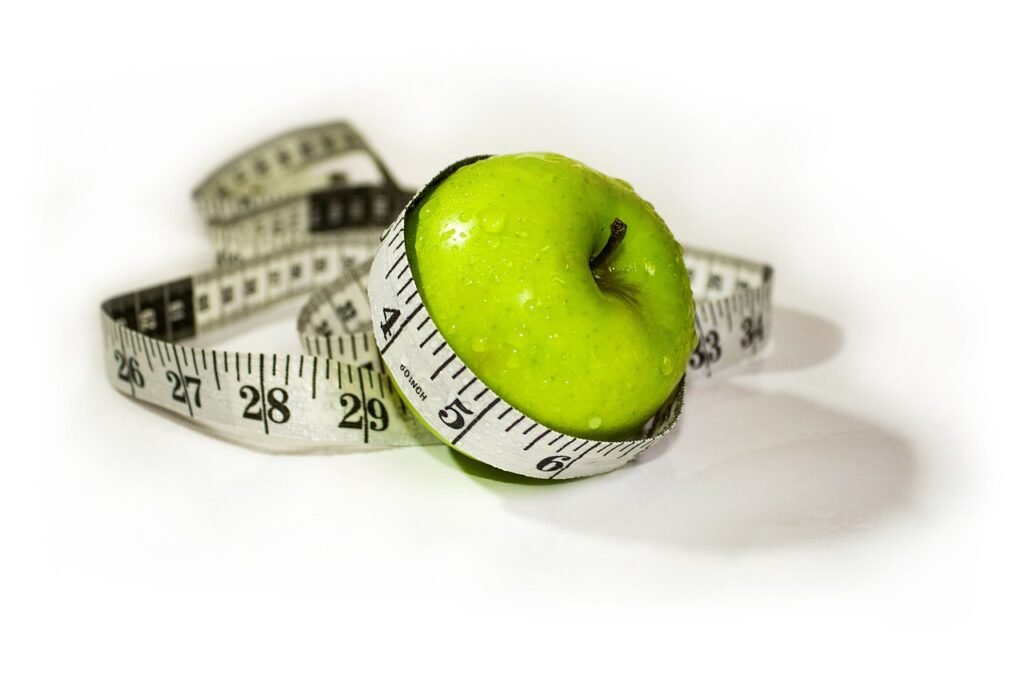- 1. How Does Social Media Influence Body Comparison Among Teenage Girls?
- 2. What Role Does Social Media Play in the Lives of Individuals with Eating Disorders?
- 3. How Does Frequent Social Media Use Affect Body Consciousness?
- 4. How Common Is Meal Skipping Due to Social Media Influence?
- 5. How Do Social Media Influences Affect Adolescents' Diet and Exercise Habits?
- 6. How Prevalent Is Weight Bullying on Social Media?
- 7. What Pressures Do Social Media Users Feel to Lose Weight?
- 8. How Do People with Eating Disorders Use Social Media?
- 9. How Does Social Media Affect Teenage Boys' Perception of Body Image?
- 10. What Pressure Do Young Adults Feel to Look Perfect Because of Social Media?
- 11. How Does Social Media Influence Women’s Body Comparisons?
- 12. What Role Does Social Media Play in Anorexia Nervosa?
- 13. How Do People with Bulimia Nervosa Use Social Media?
- 14. How Common Is Photo Editing Among Social Media Users?
- 15. How Many Individuals with Eating Disorders Follow Pro-Eating Disorder Accounts?
- 16. How Many Teens Follow Influencers on Social Media?
- 17. How Does Social Media Affect Adolescents' Appearance Satisfaction?
- 18. How Do Teens Use Social Media for Dieting Tips?
- 19. How Does Social Media Encourage Comparison Among Those with Eating Disorders?
- 20. How Prevalent Are Unhealthy Dieting Practices Promoted Online?
- 21. How Concerned Are Parents About Social Media’s Impact on Body Image?
- 22. How Does Social Media Affect Teens' Ability to Appreciate Their Own Bodies?
- 23. How Common Are Weight Loss Advertisements on Social Media?
- 24. How Does Social Media Trigger Binge Eating Episodes?
- 25. How Do Teens Perceive Beauty Standards Due to Social Media?
- 26. How Do Young Adults Use Social Media to Hide Eating Disorders?
- 27. What Should Social Media Platforms Do to Regulate Content Related to Eating Disorders?
- 28. How Does Social Media Worsen Symptoms of Eating Disorders?
- 29. How Do Teens Feel Judged Based on Their Social Media Profiles?
- 30. How Does Social Media Contribute to Feelings of Isolation in People with Eating Disorders?
- Conclusion
- We got all the latest Marketing Stats here:
Social media has revolutionized the way we connect, share, and interact with the world. However, it has also brought about a range of mental health issues, including a profound impact on body image and eating disorders. In this article, we’ll explore the eye-opening statistics that reveal the strong link between social media use and eating disorders. Understanding these statistics can help us navigate the digital landscape more mindfully and promote healthier online behaviors.
1. How Does Social Media Influence Body Comparison Among Teenage Girls?

The Impact of Images on Self-Perception
70% of teenage girls say they compare their bodies to images they see on social media. This comparison often leads to dissatisfaction with their own bodies, as the images on social media are typically curated, edited, and idealized.
This constant comparison can result in a negative body image and contribute to the development of eating disorders. To combat this, it’s important for teenagers to follow accounts that promote body positivity and authenticity.
2. What Role Does Social Media Play in the Lives of Individuals with Eating Disorders?
Contribution to Eating Disorders
50% of individuals with eating disorders report that social media contributes to their condition. The pervasive nature of social media means that individuals are constantly bombarded with images and messages that can trigger or exacerbate their eating disorder behaviors.
For those struggling with eating disorders, limiting exposure to triggering content and seeking professional help can be crucial steps toward recovery.
3. How Does Frequent Social Media Use Affect Body Consciousness?
Increased Self-Consciousness
80% of people who use social media frequently feel more self-conscious about their body image. The constant exposure to idealized body types can make users overly aware of their own perceived flaws.
This heightened self-consciousness can lead to unhealthy behaviors such as excessive dieting, over-exercising, or disordered eating. It’s essential to recognize the unrealistic nature of many social media images and focus on self-acceptance and healthy habits.
4. How Common Is Meal Skipping Due to Social Media Influence?
Skipping Meals for Appearance
35% of respondents say they have skipped meals to look better in selfies. This alarming behavior highlights the lengths to which individuals will go to conform to the idealized standards they see online.
Skipping meals can lead to serious health issues and exacerbate eating disorders. Promoting messages of healthy eating and self-care over appearance-focused content can help reduce this harmful behavior.
5. How Do Social Media Influences Affect Adolescents’ Diet and Exercise Habits?
Impact on Diet and Exercise
65% of adolescents report that social media influences their diet and exercise habits. This can be positive when it encourages healthy behaviors, but it can also lead to extreme dieting and over-exercising in an attempt to emulate the bodies they see online.
It’s important for influencers and content creators to promote balanced, healthy lifestyles rather than extreme measures.
6. How Prevalent Is Weight Bullying on Social Media?
Bullying and Its Effects
45% of teens say they have been bullied about their weight on social media. Weight bullying can have devastating effects on a teenager’s self-esteem and mental health, often leading to or worsening eating disorders. Social media platforms need to enforce strict anti-bullying policies and provide support for victims of online harassment.
7. What Pressures Do Social Media Users Feel to Lose Weight?
Pressure to Conform
60% of social media users say they feel pressure to lose weight after seeing images of thin people online. This pressure can drive unhealthy behaviors and increase the risk of developing eating disorders. Users should be encouraged to celebrate body diversity and focus on health rather than conforming to unrealistic standards.
8. How Do People with Eating Disorders Use Social Media?
Validation of Unhealthy Habits
20% of people with eating disorders use social media as a way to share and validate their unhealthy eating habits. This can create echo chambers where harmful behaviors are normalized and even encouraged. Encouraging the use of social media for positive support and recovery-focused communities can help counteract this trend.
9. How Does Social Media Affect Teenage Boys’ Perception of Body Image?
Boys and Body Image
55% of teenage boys say social media impacts their perception of an ideal body type. While the focus is often on girls, boys are also affected by the body ideals promoted on social media.
This can lead to body dissatisfaction and unhealthy behaviors aimed at achieving a certain physique. Promoting a range of healthy body types and emphasizing the importance of physical health over appearance can help mitigate these effects.
10. What Pressure Do Young Adults Feel to Look Perfect Because of Social Media?

The Perfection Trap
33% of young adults feel pressured to look perfect because of social media. This pressure can lead to stress, anxiety, and the development of eating disorders. Encouraging authenticity and promoting content that shows real, unfiltered lives can help reduce the pressure to appear perfect.
11. How Does Social Media Influence Women’s Body Comparisons?
Unfavorable Comparisons
48% of women compare their bodies unfavorably to those of women they see on social media. This constant comparison can lead to body dissatisfaction and lower self-esteem.
Women often see edited and filtered images that set unrealistic beauty standards, making them feel inadequate about their own bodies. To combat this, it is essential to promote accounts that emphasize body positivity and the diversity of real bodies.
12. What Role Does Social Media Play in Anorexia Nervosa?
Influence on Anorexia
25% of people with anorexia nervosa say social media played a role in the development of their disorder. The exposure to images and communities that glorify thinness can trigger or exacerbate anorexia nervosa. Social media platforms should actively monitor and remove content that promotes eating disorders and provide resources for those seeking help.
13. How Do People with Bulimia Nervosa Use Social Media?
Searching for Harmful Information
75% of people with bulimia nervosa report using social media to find information on purging techniques. This harmful behavior highlights the need for stricter content moderation and the promotion of recovery-focused resources. Educating users about the dangers of these behaviors and providing supportive content can help guide them towards healthier choices.
14. How Common Is Photo Editing Among Social Media Users?
Editing for Approval
40% of social media users say they edit photos of themselves before posting to appear thinner. This practice contributes to unrealistic beauty standards and can impact the self-esteem of both the user and their audience. Encouraging the sharing of unedited, authentic images can help foster a healthier online environment.
15. How Many Individuals with Eating Disorders Follow Pro-Eating Disorder Accounts?
Following Harmful Accounts
58% of individuals with eating disorders follow pro-eating disorder accounts on social media. These accounts often promote harmful behaviors and ideologies. Platforms should work to identify and remove such content and provide support resources for users struggling with eating disorders. Encouraging users to follow recovery-focused and body-positive accounts can provide healthier influences.

Related: Check out our free tools:

16. How Many Teens Follow Influencers on Social Media?
Influence of Celebrities
90% of teens follow at least one celebrity or influencer on social media. Influencers can have a significant impact on their followers’ perceptions and behaviors.
It is crucial for influencers to promote positive messages about body image and mental health. Brands should partner with influencers who advocate for healthy lifestyles and self-acceptance.
17. How Does Social Media Affect Adolescents’ Appearance Satisfaction?
Feeling Worse About Appearance
52% of adolescents report feeling worse about their appearance after seeing images on social media. This dissatisfaction can lead to negative self-perception and the development of eating disorders. Encouraging adolescents to engage with content that promotes self-love and realistic beauty standards can help mitigate these feelings.
18. How Do Teens Use Social Media for Dieting Tips?
Seeking Diet Advice
29% of teens have sought out dieting tips from social media. While some advice can be healthy, much of it can be dangerous and promote disordered eating. It is essential for teens to have access to accurate and safe nutritional information.
Social media platforms should collaborate with nutrition experts to provide reliable content and debunk harmful myths.
19. How Does Social Media Encourage Comparison Among Those with Eating Disorders?
Comparing with Others
85% of people with eating disorders report engaging in comparing themselves to others on social media. This behavior can worsen their condition by reinforcing feelings of inadequacy and promoting unhealthy habits.
Encouraging users to focus on their own progress and achievements, rather than comparing themselves to others, can foster a more positive mindset.
20. How Prevalent Are Unhealthy Dieting Practices Promoted Online?

Unhealthy Diet Practices
37% of social media users say they have tried unhealthy dieting practices promoted online. These practices can lead to serious health issues and contribute to the development of eating disorders. Platforms should take responsibility for the content shared and promote healthy, science-backed dietary advice.
21. How Concerned Are Parents About Social Media’s Impact on Body Image?
Parental Concerns
68% of parents are concerned about the impact of social media on their children’s body image. Parents worry about the unrealistic standards and harmful content their children might encounter online.
To address these concerns, parents should engage in open conversations with their children about the content they consume and the importance of a healthy body image. Social media platforms can also provide resources and tools to help parents monitor and manage their children’s online activities.
22. How Does Social Media Affect Teens’ Ability to Appreciate Their Own Bodies?
Difficulty in Self-Appreciation
44% of teens feel that social media makes it difficult to appreciate their own body. The constant comparison to curated and often unrealistic images can lead to dissatisfaction and negative self-esteem.
Encouraging teens to follow body-positive accounts and engage with content that promotes self-acceptance can help improve their body image. Social media campaigns that celebrate diversity and authenticity can also play a crucial role in this regard.
23. How Common Are Weight Loss Advertisements on Social Media?
Prevalence of Weight Loss Ads
63% of social media users report seeing weight loss advertisements on social media platforms. These ads can contribute to the pressure to conform to certain body standards and may promote unhealthy weight loss methods.
Social media companies should ensure that the advertisements they allow are promoting healthy and sustainable weight management practices. Users can also be educated on how to critically evaluate these ads and seek professional advice for their health concerns.
24. How Does Social Media Trigger Binge Eating Episodes?
Triggers for Binge Eating
30% of people with binge eating disorder say social media triggers their binge episodes. Exposure to food-related content, dieting pressures, and body comparison can exacerbate their condition.
To reduce these triggers, social media platforms can offer features that allow users to customize their feeds to exclude specific types of content. Encouraging the creation and sharing of content that promotes healthy relationships with food can also be beneficial.
25. How Do Teens Perceive Beauty Standards Due to Social Media?
Unrealistic Beauty Expectations
51% of adolescents believe that social media has created unrealistic expectations of beauty. These standards are often unattainable and can lead to body dissatisfaction and eating disorders.
To combat this, it’s important for social media influencers and brands to promote a more inclusive and realistic portrayal of beauty. Campaigns that highlight the diversity of beauty and challenge traditional standards can help reshape perceptions.
26. How Do Young Adults Use Social Media to Hide Eating Disorders?

Concealing Conditions
43% of young adults with eating disorders say they use social media to hide their condition from family and friends. They may do this by presenting an idealized version of their lives or by seeking validation from online communities that share similar struggles.
It’s crucial for friends and family to be aware of this possibility and to look for signs of distress or unusual behavior. Encouraging open communication and providing support can help individuals feel safe enough to seek help.
27. What Should Social Media Platforms Do to Regulate Content Related to Eating Disorders?
Regulation and Responsibility
66% of social media users believe that platforms should do more to regulate content related to eating disorders. This includes identifying and removing harmful content, providing accurate information about eating disorders, and offering resources for those seeking help.
Collaboration with mental health organizations to develop guidelines and support systems can enhance the effectiveness of these measures. Platforms should also promote content that supports recovery and positive mental health.
28. How Does Social Media Worsen Symptoms of Eating Disorders?
Worsening Symptoms
38% of individuals with eating disorders say social media worsens their symptoms. The continuous exposure to triggering content and the pressure to conform to certain standards can intensify their struggles.
To mitigate this, users can be encouraged to take regular breaks from social media and engage in activities that promote mental well-being. Social media platforms can also create algorithms that prioritize content promoting mental health and recovery.
29. How Do Teens Feel Judged Based on Their Social Media Profiles?
Perceived Judgment
72% of teens believe that their peers judge them based on their social media profiles. This perceived judgment can lead to anxiety and a constant need to curate a perfect online presence.
Encouraging authenticity and promoting a culture of acceptance on social media can help reduce this pressure. Teens should be reminded that their worth is not determined by their online appearance but by their real-life qualities and actions.
30. How Does Social Media Contribute to Feelings of Isolation in People with Eating Disorders?
Isolation and Social Media
54% of people with eating disorders feel more isolated because of their social media use. Despite the potential for connection, social media can sometimes exacerbate feelings of loneliness and isolation. This can be due to the nature of the content consumed or the interactions experienced online.
Encouraging users to seek out supportive and understanding communities can help reduce these feelings of isolation. Social media platforms can facilitate this by promoting groups and forums focused on recovery and mental health support.
Conclusion
The link between social media and eating disorders is complex and multifaceted. The statistics presented in this article highlight the significant impact that social media can have on body image and eating behaviors. By understanding these effects, users can make more informed decisions about their social media use. Social media platforms, influencers, and brands all have a role to play in promoting healthy, realistic body images and supporting those struggling with eating disorders. Together, we can create a more positive and supportive online environment that fosters mental well-being and self-acceptance.
We got all the latest Marketing Stats here:
READ NEXT:
- Is Arbitration Effective for U.S Business?
- All About Key Managerial Personnel in Indian Companies
- An Overview of Special Economic Zones in India
- Data Privacy Laws in India and Its Impact on Business
- Virtual Reality and Its Implications for Travel SEO






















Comments are closed.